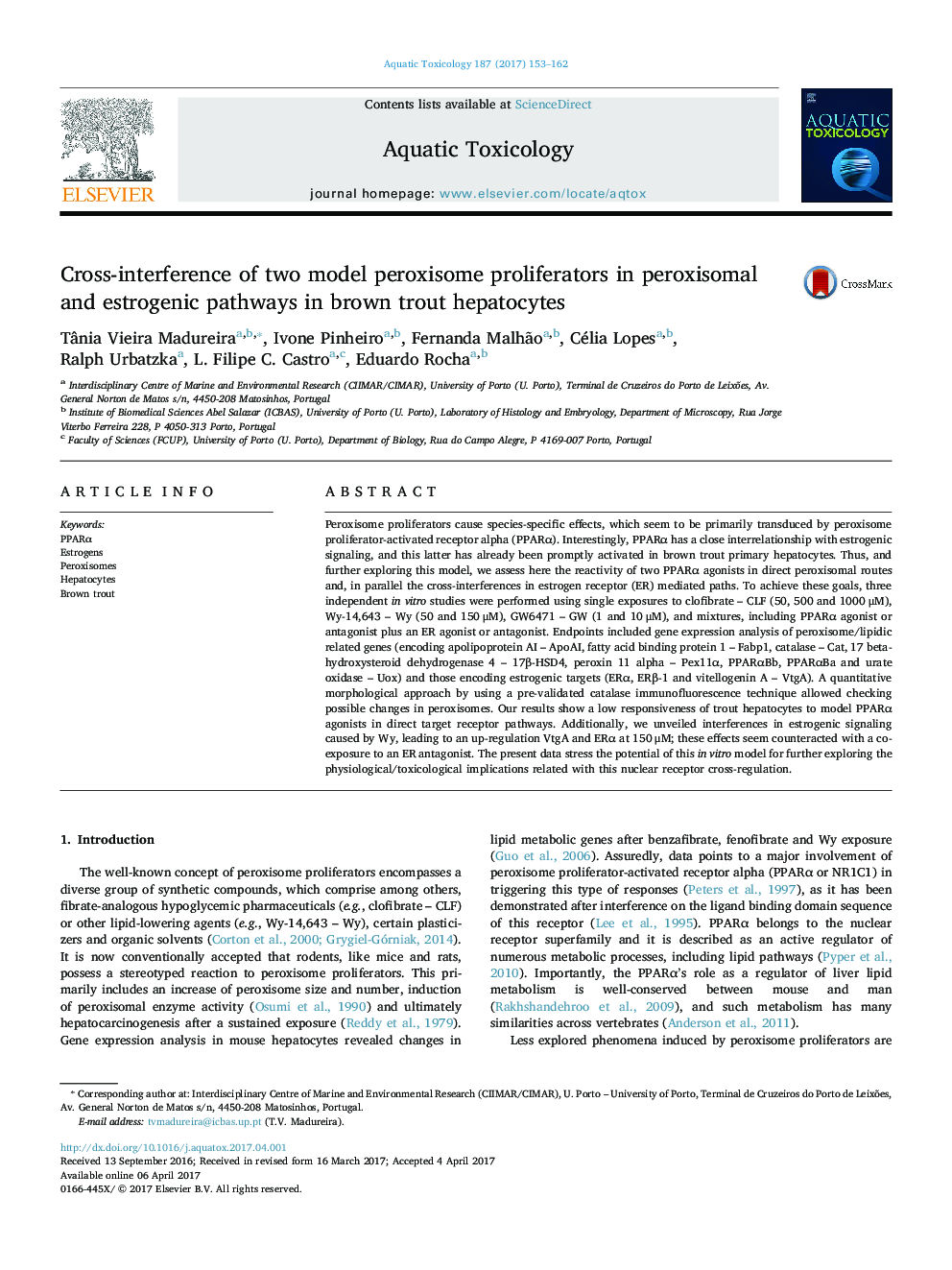| Article ID | Journal | Published Year | Pages | File Type |
|---|---|---|---|---|
| 5764306 | Aquatic Toxicology | 2017 | 10 Pages |
Abstract
Peroxisome proliferators cause species-specific effects, which seem to be primarily transduced by peroxisome proliferator-activated receptor alpha (PPARα). Interestingly, PPARα has a close interrelationship with estrogenic signaling, and this latter has already been promptly activated in brown trout primary hepatocytes. Thus, and further exploring this model, we assess here the reactivity of two PPARα agonists in direct peroxisomal routes and, in parallel the cross-interferences in estrogen receptor (ER) mediated paths. To achieve these goals, three independent in vitro studies were performed using single exposures to clofibrate - CLF (50, 500 and 1000 μM), Wy-14,643 - Wy (50 and 150 μM), GW6471 - GW (1 and 10 μM), and mixtures, including PPARα agonist or antagonist plus an ER agonist or antagonist. Endpoints included gene expression analysis of peroxisome/lipidic related genes (encoding apolipoprotein AI - ApoAI, fatty acid binding protein 1 - Fabp1, catalase - Cat, 17 beta-hydroxysteroid dehydrogenase 4 - 17β-HSD4, peroxin 11 alpha - Pex11α, PPARαBb, PPARαBa and urate oxidase - Uox) and those encoding estrogenic targets (ERα, ERβ-1 and vitellogenin A - VtgA). A quantitative morphological approach by using a pre-validated catalase immunofluorescence technique allowed checking possible changes in peroxisomes. Our results show a low responsiveness of trout hepatocytes to model PPARα agonists in direct target receptor pathways. Additionally, we unveiled interferences in estrogenic signaling caused by Wy, leading to an up-regulation VtgA and ERα at 150 μM; these effects seem counteracted with a co-exposure to an ER antagonist. The present data stress the potential of this in vitro model for further exploring the physiological/toxicological implications related with this nuclear receptor cross-regulation.
Related Topics
Life Sciences
Agricultural and Biological Sciences
Aquatic Science
Authors
Tânia Vieira Madureira, Ivone Pinheiro, Fernanda Malhão, Célia Lopes, Ralph Urbatzka, L. Filipe C. Castro, Eduardo Rocha,
